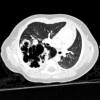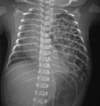Major surgical conditions of childhood and their lifelong implications: comprehensive review
- PMID: 38776252
- PMCID: PMC11110943
- DOI: 10.1093/bjsopen/zrae028
Major surgical conditions of childhood and their lifelong implications: comprehensive review
Abstract
Background: In recent decades, the survival of children with congenital anomalies and paediatric cancer has improved dramatically such that there has been a steady shift towards understanding their lifelong health outcomes. Paediatric surgeons will actively manage such conditions in childhood and adolescence, however, adult surgeons must later care for these 'grown-ups' in adulthood. This article aims to highlight some of those rare disorders encountered by paediatric surgeons requiring long-term follow-up, their management in childhood and their survivorship impact, in order that the adult specialist may be better equipped with skills and knowledge to manage these patients into adulthood.
Methods: A comprehensive literature review was performed to identify relevant publications. Research studies, review articles and guidelines were sought, focusing on the paediatric management and long-term outcomes of surgical conditions of childhood. The article has been written for adult surgeon readership.
Results: This article describes the aforementioned conditions, their management in childhood and their lifelong implications, including: oesophageal atresia, tracheo-oesophageal fistula, malrotation, short bowel syndrome, duodenal atresia, gastroschisis, exomphalos, choledochal malformations, biliary atresia, Hirschsprung disease, anorectal malformations, congenital diaphragmatic hernia, congenital lung lesions and paediatric cancer.
Conclusion: The increasing survivorship of children affected by surgical conditions will translate into a growing population of adults with lifelong conditions and specialist healthcare needs. The importance of transition from childhood to adulthood is becoming realized. It is hoped that this timely review will enthuse the readership to offer care for such vulnerable patients, and to collaborate with paediatric surgeons in providing successful and seamless transitional care.
© The Author(s) 2024. Published by Oxford University Press on behalf of BJS Foundation Ltd.
Figures















References
-
- Blum RW, Garell D, Hodgman CH, Jorissen TW, Okinow NA, Orr DP et al. Transition from child-centered to adult health-care systems for adolescents with chronic conditions. J Adolesc Health 1993;14:570–576 - PubMed
-
- Pedersen RN, Calzolari E, Husby S, Garne E, EUROCAT Working Group . Oesophageal atresia: prevalence, prenatal diagnosis and associated anomalies in 23 European regions. Arch Dis Child 2012;97:227–232 - PubMed

